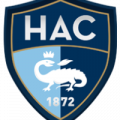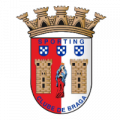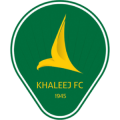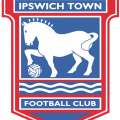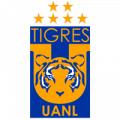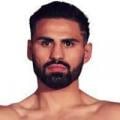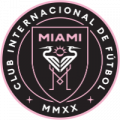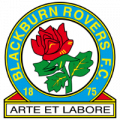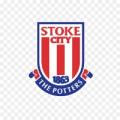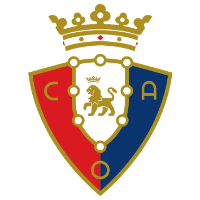
Club Atlético Osasuna
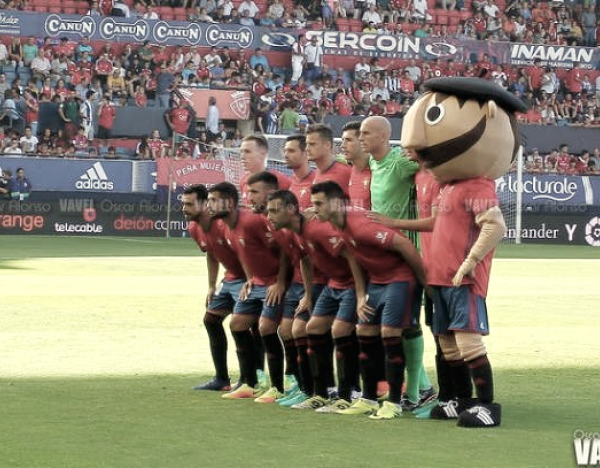
1920 Pamplona, Navarra
Club Atlético Osasuna is a Spanish club from the city of Pamplona, Navarre. It was founded in 1920 thanks to the merger of two of the city's old clubs, Unión Sportiva and New Club, which, after the dissolution of various soccer entities, refused to let the sport disappear from Navarre. Research in the Royal and General Archives of Navarre indicates that the Sportiva Foot-Ball Club, founded on May 31, 1919, changed its name to Club Osasuna in 1920, the latter being the date taken as a reference for the club's birth. In 1926, the club's name was changed to Club Atlético Osasuna, which has remained in force ever since.
It currently plays in LaLiga Santander and its president is Luis Sabalza. It is one of only four professional clubs in Spain, along with Real Madrid, FC Barcelona and Athletic Club, that is not a sports corporation, so the ownership of the club belongs to its members.
Etymology
Osasuna is a Basque word meaning health, strength or vigor, which makes it the only professional club with a name in that language.
We're used to hearing "el Osasuna" to refer to the team, but the correct way is to refer to it as "Osasuna". This is because the article of the word is present at the end, "Osasun-a". So, if we use the expression "el Osasuna", we would be using two definite articles, "el la Salud".
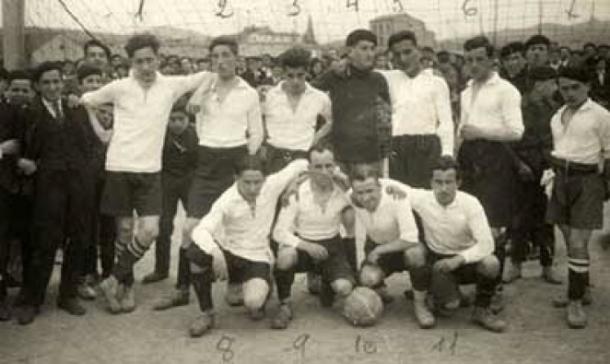
The foundation
It all started with meetings between members of the New Club and the Sports Union, which led to the foundation of the Sports Society. A collection was made to buy a ball and equipment, so that they could play different matches against military teams of the time, which were played at Media Luna.
Internal disagreements within the Sociedad Sportiva led to a split and the birth of a new company, the New Club. These two sporting bodies set up two committees to begin the preliminary work of founding a new club. Eduardo Aizpún, Francisco Altadill and Gerardo Arteaga were members of Sociedad Sportiva, and Joaquín Rasero, Augusto Vizcarra and Ángel Goikoetxea were members of the New Club.
All the meetings went smoothly, until they concluded with a meeting at Café Kutz, attended by all the members of the two organizations.
By vote of those present, the new club was formed and given the name Osasuna. The merger was signed by the six people who were part of the two aforementioned committees.
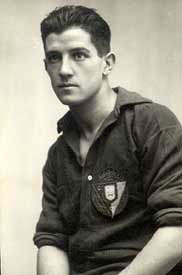
Benjamín Andoian Martínez gave the club its name, Osasuna, a Basque word meaning health, strength or vigor.
Beginnings
Osasuna's first games were friendly matches, alternating between the Ensanche and Hipódromo pitches. The following season, with more and more fans, the club had to find a stadium of its own that met the requirements of the competition. Thus was born the San Juan stadium, which was inaugurated with a match against Arenas de Getxo.
At just five years old, Osasuna had its first international player, Seve Goiburu, who stayed with the club until the 1928/29 season. That same season saw the creation of a league with three categories: First, Second and Third Division. Osasuna was relegated to the latter category. A year earlier, the Navarre Football Federation had been created and, from that moment on, Osasuna no longer belonged to the Guipuzcoan Federation.
National promotion
In the 1931/32 season, the Rojillos were promoted to the silver division with Martín José Muguiro as coach.
Osasuna established themselves as one of the strongest teams in the category and, two seasons later, achieved their first promotion to the top flight. Theyalso reached the semi-final of the Cup, where they were eliminated by Sevilla.
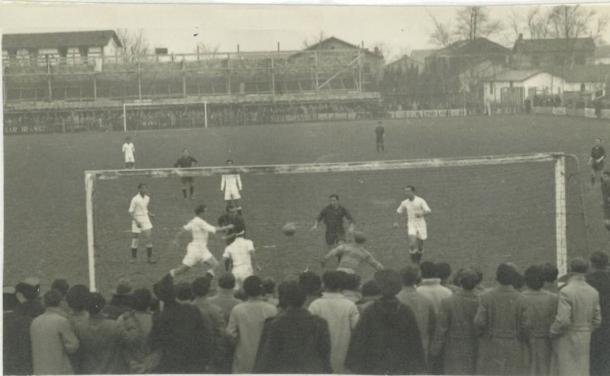 The semi-final
The semi-final
The spellin the top flight lasted a year. Osasuna were regulars at home, but failed to pick up any points away from home. However, that same season they reached the semi-finals of the Cup again and were knocked out by Barcelona. In the first leg, Osasuna won 4-2, but in the second leg, accompanied by many fans, they were beaten 7-1.
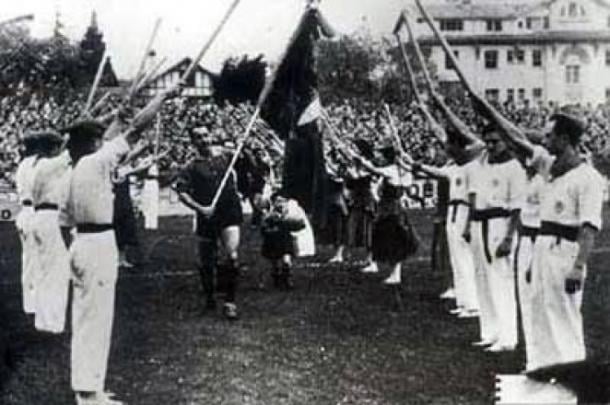
Difficult times
In the 1940s, Osasuna went through one of its worst periods. The economic debt seemed to be drowning Osasuna. This, and the relegation to the third division, meant that the situation worsened at times, with the players having to travel by cab.
Under the management of Amadeo Labarta, the team began to play well and the fans put pressure on the players to overcome the difficult situation the club was going through. With these events, the economic problems were solved and the club climbed up to the silver division.
With the new signings, the management made an effort to maintain their status. Although not without difficulties, they managed to stay in the division, but this was noticeable in the bank account, where they ended the 1949/50 season in the red.
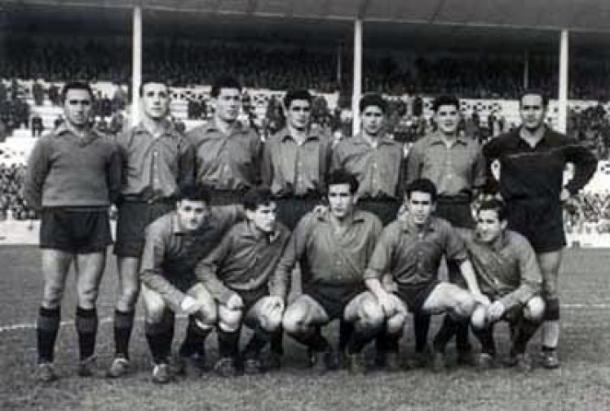
The 50s
Osasuna invested heavily in their youth teams during their stay in the second division. They achieved a creditable seventh place, as the players who made it into the first team came straight from the Primera Regional.
In the 1952/53 season, the club achieved its second promotion to the top flight under the guidance of coach Tomás Arnanz. The return to the first division was a disappointment, with another relegation.
In the 1956/57 season, Osasuna were promoted again with Baltasar Albéniz as coach. Osasuna went from deficit to surplus in economic terms, which earned them good years in sporting terms. They finished in fifth place, with resounding victories at the San Juan stadium against Real Madrid, Barcelona, Real Sociedad and Sevilla.
In the 1959/60 season, the team was relegated. This was a season in which three coaches were in charge of the team. The following season, Osasuna returned to the top flight. That season, Ignacio Zoco and Félix Ruiz were transferred to Real Madrid for 6 million pesetas. A record at the time.
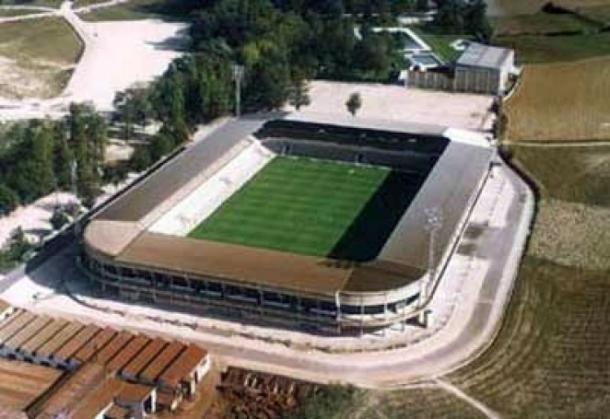
From San Juan to El Sadar
With the team in the silver category, the emblematic San Juan pitch was sold on April 9, 1966 for 40 million pesetas to Sociedad Navarra, S.A. The sale of the old pitch served to pay off debts and alleviate the difficult economic situation of the red and white team.
On September 2, 1967, the El Sadar stadium was inaugurated, a modern and comfortable stadium with a capacity for 25,000 spectators. The inaugural match at the new venue pitted Real Zaragoza against Vitória de Setúbal, a game that ended in a one-goal draw. The following day, the "rojillos" faced Vitória de Setúbal and won 3-0. Osasuna's first goal at the El Sadar stadium was scored by Osaba. Unfortunately, with a First Division pitch, Osasuna were relegated to the Third Division this season. Also this season, work began on the C.A. Osasuna facilities park, located next to the stadium.
The era of president Fermín Ezcurra began in the 1971/72 season, and after some delicate years at institutional and sporting level, Osasuna were promoted back to the First Division.
Debut in Europe
A goal from Chuma Randez sent Osasuna up the division in the 1979/80 season, in an agonizing game played in La Condomina, Murcia, in front of 7,000 spectators.
The 1982/83 season was marked by the inauguration of the legendary Tajonar facilities, a cradle of national talent.
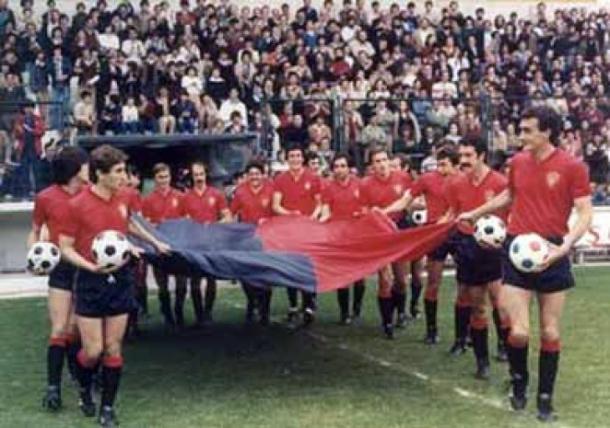
During this period, Pepe Alzate created a team that was very difficult to beat at home and difficult to beat away. Years later, with his departure, Yugoslav Iván Brizc was brought in. With him, stars like Maradona passed through El Sadar, and the team gained important points to stay in the top half of the table. Osasuna finished sixth, which led to their first appearance in European competition.
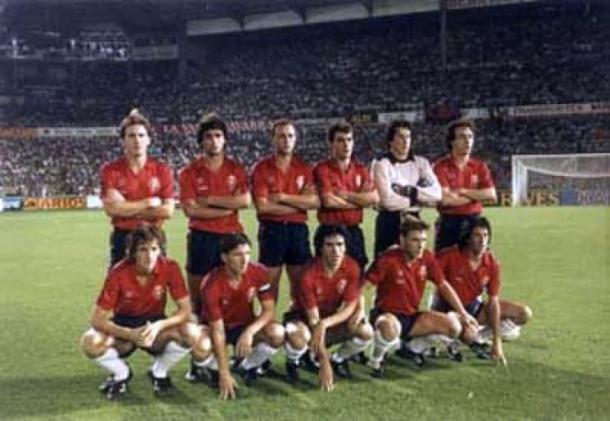
The team from Pamplona made it through the first round after losing the first leg 1-0 against Glasgow Rangers and winning 2-0. Patxi Rípodas was Osasuna's first scorer in European competition.
Pedro Mari Zabalza took charge of the team after Iván Brizc was sacked, during a season in which the club had to play in a relegation playoff.
The coach put together a team that had the strength of a big club. It was a golden season, in which Osasuna climbed up the table to fourth place and secured their place in the UEFA Cup.
This season will be remembered for the 4-0 win at the Santiago Bernabéu with a hat-trick from Jan Urban, who became an Osasuna idol.
At the end of the decade, Osasuna expanded its extension in Tajonar and the capacity of its stadium, as the new Tribuna de Preferencia Alta stand was built at the El Sadar stadium, with a capacity for 4,000 spectators.
Among the big teams
Osasuna rose to the challenge of their European participation. They beat Slavia Sofia and Stuttgart to reach the last 16, where they were knocked out by the champions of that year's competition, Ajax Amsterdam.
The golden era ended with the team's relegation to the second division in 1993/94. President Ezcurra resigned, giving way to Javier Garro, who after two years took over from Juan Luis Irigaray.
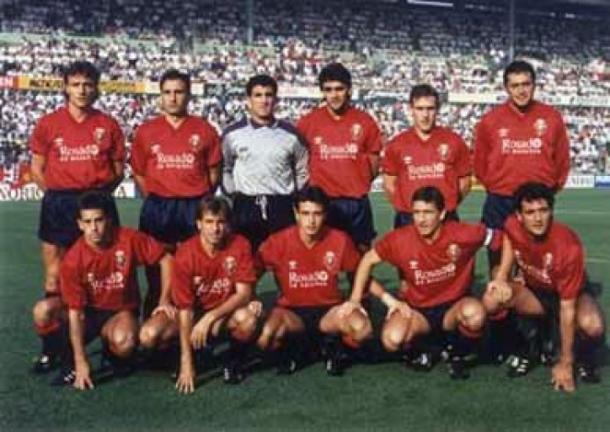
In addition to two presidents in four years, C.A. Osasuna's bench was occupied by seven coaches during this period: Txetxu Rojo, Manolo Los Arcos, Paquito, Rafael Benítez, Pedro Mari Zabalza, Miguel Sola and Enrique Martín.
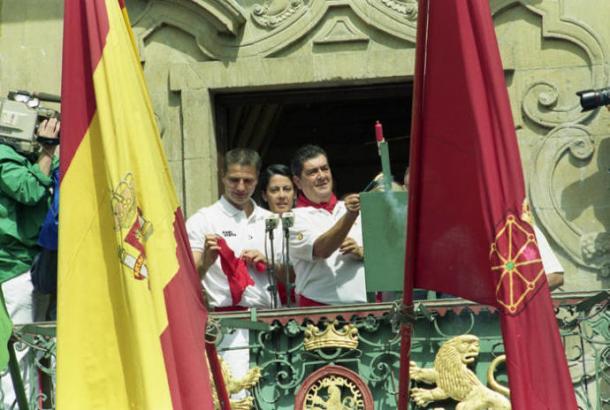
Next to him, President Javier Miranda and, in the background, Mayor Yolanda Barcina
The latter, in the 1996/97 season, pulled the Navarra team out of the abyss. Osasuna were doomed to relegation to the Segunda División B, but Enrique Martín, along with a handful of youth players, won the last four league games (Badajoz, Levante, Alavés and Mallorca) and drew the last one (Eibar), thus achieving the miracle of salvation.
In 1998, Javier Miranda took over the presidency of the club and, in his second year in office, put his faith in Miguel Ángel Lotina to lead the team to the top flight, which was achieved in the final matchday after a 2-1 win over Recreativo de Huelva. The goals were scored by Pablo Orbaiz and Trzeciak.
Osasuna were responsible for launching the Chupinazo de San Fermín in 2000.
New challenges
In the 2000/01 season, Patxi Izco became president and with him Javier Aguirre as coach, a former player from the 80s.
"El Vasco" Aguirre came close to securing a place in the UEFA Cup in the 2003/04 season. The Navarre team scored important victories at the Santiago Bernabéu against Real Madrid (0-3) or at the Mestalla against Valencia (0-1).
On an institutional level, the Government of Navarre promoted the expansion of Tajonar, which allowed Osasuna to increase its facilities to more than 300,000 square meters.
The following season, El Vasco managed to qualify the team for the UEFA group stage play-offs. Osasuna were eliminated by Stade Rennais 3-1 on aggregate.
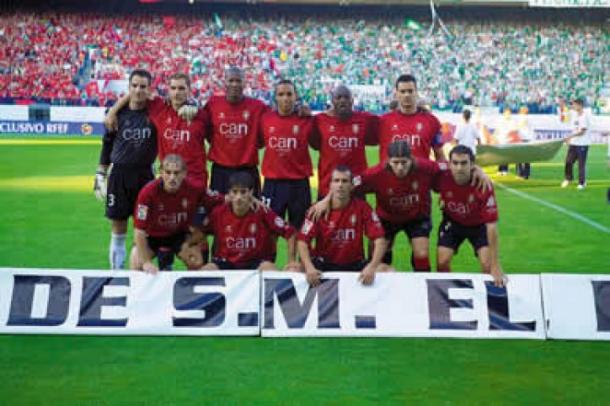 The
The
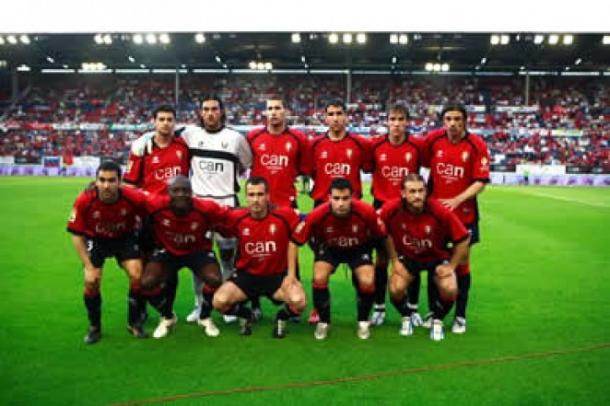
The 2005/06 season was a magical one for the club, as the Rojillos qualified in fourth place for the Champions League qualifiers, the most important European competition, behind F.C. Barcelona, R. Madrid and Valencia. The club also played in their first Copa del Rey final, against Betis, and forced extra time after being down a goal to Oliveira through Aloisi. Dani equalized and the Rojillos couldn't break the deadlock and were runners-up that year.
60 games to remember
Javier Aguirre didn't remain on the bench and Osasuna opted for a rookie coach, Cuco Ziganda. He opted for players without a big name, but with a triumphant projection. Without leaving the cost-containment line, Osasuna attracted players who had made a name for themselves in Spanish and international soccer. Soldado, Juanfran and Nekounam, to name but a few, were Ziganda's picks, while Nacho Monreal made his first-team debut after coming through the club's youth ranks.
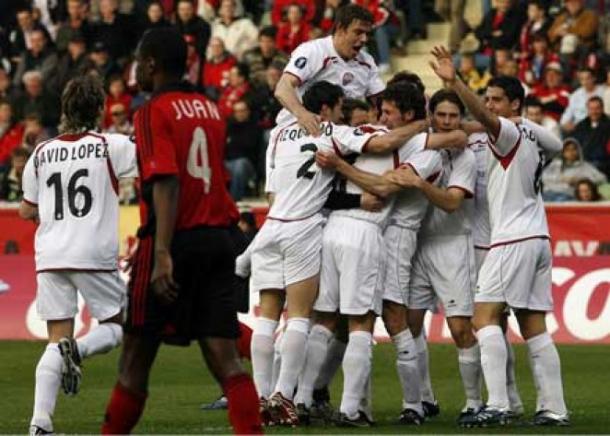
The difficult season started earlier than usual. When the Chupinazo announced the Sanfermines 2006, the professionals were already sweating in the Pyrenees mountains, looking for oxygen in their muscles to fuel themselves for the eleven months of competition that awaited them.
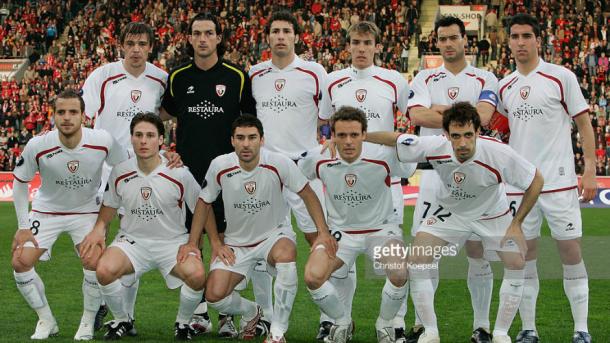
The first knockout round of the Champions League ended in a 0-0 draw at Hamburg 's stadium and the "rojillos" began to dream of games against the most important teams in Europe.The dream didn't materialize after a one-goal draw at the Reyno de Navarra stadium .
This elimination left Los Rojillos in very bad shape and during the regular league season they sowed many doubts. But the reaction came in time for the UEFA Cup. At the end of the season, Osasuna focused their efforts on the UEFA Cup and their stay in the UEFA Cup lasted until the final rounds.
Osasuna managed to reach the semi-final of the UEFA Cup against a Sevilla team that left the "rojillos" in the dock. The dream of reaching their first European final was dashed.
With their stay assured, Osasuna took the opportunity to make their debuts with Kike Sola and Jokin Esparza. It was also an opportunity to say goodbye to great players like Milosevic, Valdo, Soldado, Raúl García and others.
Agonizing defenses
From 2007/08 to 2010/11, Osasuna prayed to San Fermín to stay up. In each of those seasons, Osasuna had to wait until the last matchday to achieve the long-awaited stay.
In the first season, after a number of departures from the squad, Osasuna had to acquire players such as Portillo, Pandiani, Plasil or Javi García; get Hugo Viana or Carlos Vela on loan ; and bring in new gems such as Azpilicueta.

In a very irregular season. The Rojiblancos didn't depend on themselves to stay up, and a win, coupled with the results that favored them, meant that Osasuna stayed in the top flight for another year.

The 2008/09 season was agonizing until the very last moment. José Antonio Camacho took over from Ziganda after six games without a win and four points from two draws. At the halfway point of the season, Osasuna had 13 points and had suffered defeat at the Santiago Bernabéu after a highly publicized performance by referee Pérez Burrull.
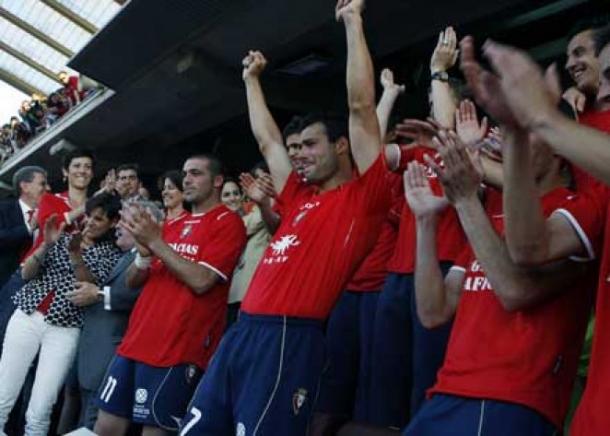
Camacho's hand was felt and a good dynamic began to emerge. But just when everything seemed to indicate that the team was going to pull off a miracle, they stumbled and it wasn't until the last matchday, against Real Madrid, that the goal that gave El Sadar the Guinness record for the highest decibel level in a soccer stadium (115.17dB) made it possible for Osasuna to be saved .
That same season, captain César Cruchaga said goodbye to the club. After 386 first-team appearances since 2000, the Pamplona man handed over the armband to Patxi Puñal, after reaching his tenth consecutive season in the top flight.
The 2009/10 season will always be characterized by an organized and competitive team, although salvation was achieved with two games to spare.
In addition, the Reds fans at El Sadar saw Xerez relegated on the last matchday, although the Reds were more concerned about their opponents' victory than their own.
The following season was once again marked by courage and grit at critical moments. Poor results and the team's poor form led Mendilibar to turn things around from the bench.
A win against Sevilla, after an epic comeback at El Sadar, meant that with two games to go Osasuna had to pick up just one point.
Highs and lows
The 2011/12 season was a time of doubt when facing the spectre of relegation. Mendilibar managed to stay close to the European places and kept the fans dreaming. Names like Andrés Fernández were unveiled in top-flight soccer, and Raúl García returned home as leader of the team, which was led by the experienced Nino up front.

On the final day, a win and a series of results that didn't favor Osasuna could have brought about the miracle of Europe. In the end, Osasuna won, but the results didn't happen.
Patxi Izco stepped down as president at the end of that campaign, after ten seasons at the helm of the club, in one of the team's most golden eras.
The following season, Osasuna were once again playing with fire. The start of Miguel Archanco 's term as president was not good. The economic recession forced key players out of the club and this was noticeable throughout the season, where they tried to disguise their shortcomings with an organized game and by trying to minimize mistakes in attack and defence. Some of the biggest names this season were Andrés Fernández and Kike Sola.
The Rojillos feared relegation, but salvation was assured on the penultimate matchday with Patxi Puñal's shot that cleared the cobwebs from Sevilla 's goal at El Sadar and Cejudo's subsequent goal from a direct free kick. The visit to the Santiago Bernabéu on the final day was a mere formality to make the home players, like Roberto Torres, shine.

After playing with the fire of relegation, Osasuna burned. Archanco decided to sack Mendilibar and hire Javi Gracia as coach of the Rojiblancos team, with only three league games played.
The team, with more shadows than lights, couldn't get out of the relegation zone and the consequent relegation triggered the most serious crisis in the club's history . The board resigned in the wake of the relegation. It was later revealed that , since Patxi Izco became president, the club had committed accounting irregularities. The club was left with a debt of 100 million euros.
This year will also be remembered for the farewell of Patxi Puñal, who, after 513 games and 17 years as a professional, failed to keep his team in the top flight.
Javier Flaño and Enrique Martín Monreal will be the men most remembered from the 2014/15 season, commonly known as the "Sabadell season", with the latter saving Osasuna from a possible demise for the second time. Osasuna were playing on the final day of the season not only to stay in the silverware category, but also to stay alive. Economic debts, coupled with relegation to non-professional soccer, would make Osasuna's survival unstable.
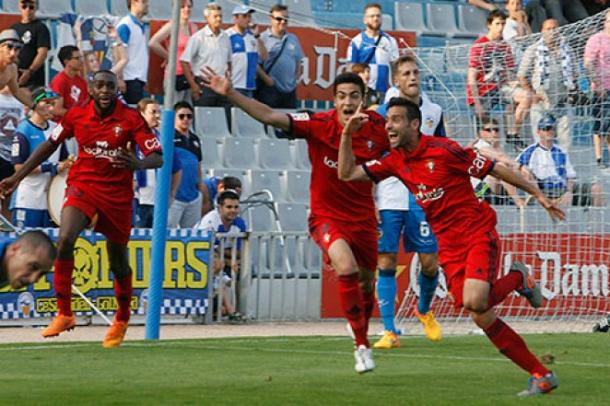
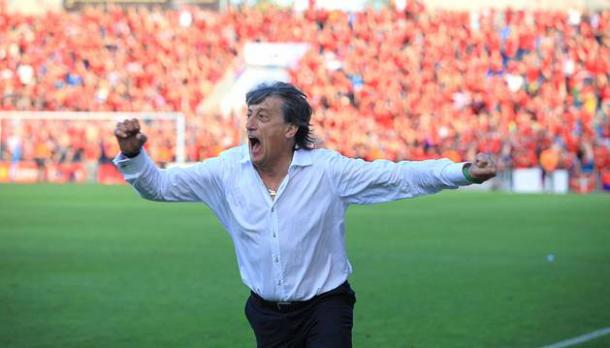
In the 77th minute, the score was 2-0 in favor of the home team. It was then that David García, with a header, gave Osasuna hope with thirteen minutes to go. But it wasn't until the 92nd minute that Javier Flaño, again with a header from a corner, gave Osasuna the chance to hold on.
Jan Urban, Mateo and Martín Monreal himself sat on the bench during this agonizing season. On an institutional level, the current president, Luis Sabalza, took over in December at a very delicate time.
It would be Enrique Martín himself who achieved promotion a year later. In a season with a squad full of young players and one of the lowest budgets in the category, the team achieved promotion when what was expected was to remain in the category.
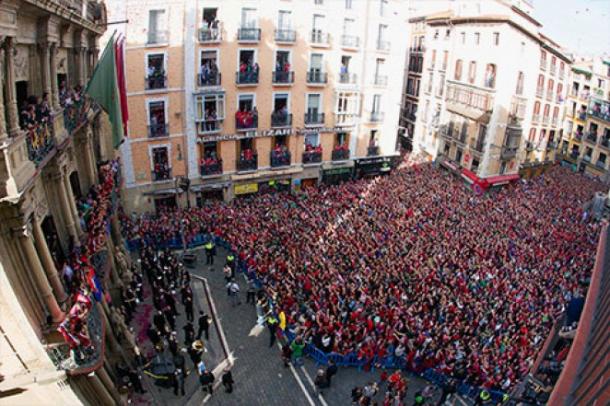
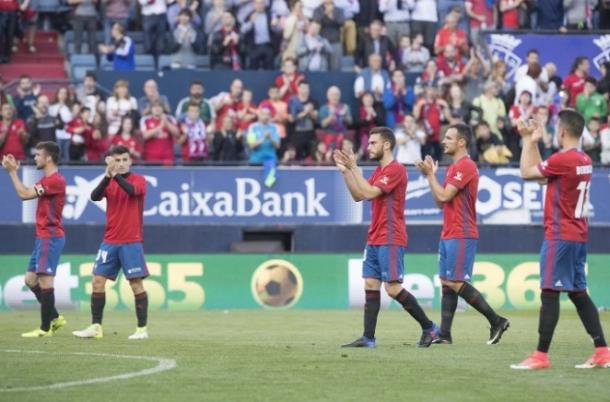
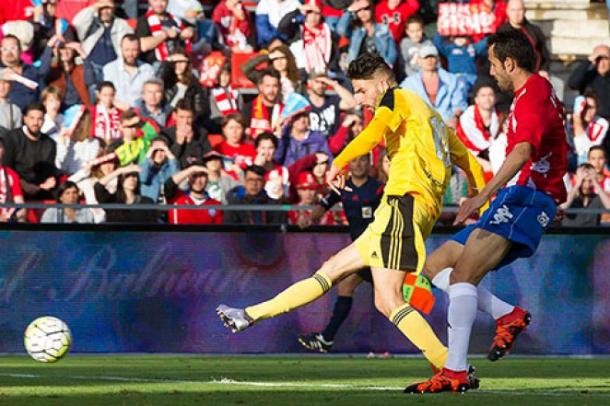
Osasuna had to beat Oviedo by 5 goals on the last matchday and get the right results to qualify for the promotion playoffs. And so it happened.
The team managed to win every game in the tournament, and Kenan Kodro's final goal will be remembered for certifying their return to the top flight.
The 2016/17 season was marked by the budget limit set by the Foral Law for restructuring the club's debt. This meant that the squad wasn 't competitive enough. Neither Enrique Martín, nor his replacement, Joaquín Caparrós, nor much less Petar Vasiljevic, who until then had been the sporting director, were able to stop the debacle. After the end of the season, the Serbian coach ended his association with the club.
A new era
The club was determined to return to the top flight. Braulio Vázquez took over as sporting director, accompanied by Cata as technical secretary and Diego Martínez as coach.
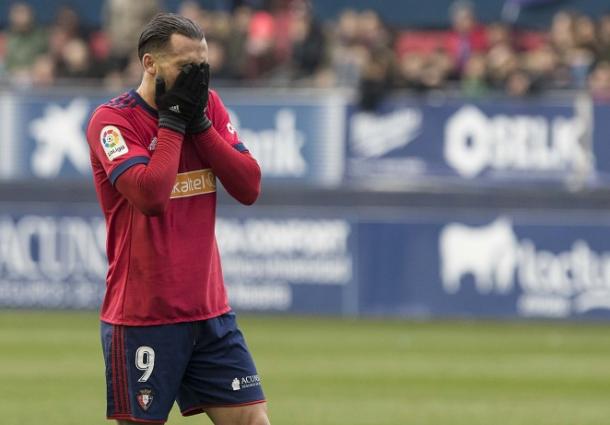
Under him, the team returned to the competition, conceding 34 goals in 42 games. Despite this, Osasuna went from strength to strength and missed out on the Play Offs by one point. The Reds had to try again the following season, but not with Diego Martínez, who ended his relationship with Osasuna.
A dream Osasuna
Jagoba Arrasate arrived with a backpack full of illusions for a team that would go on to win the league title after 58 years. This feat was achieved thanks to players like Rubén García, Roberto Torres, Rubén Martínez... among others.
In an unrepeatable season, Los Rojillos achieved 87 points, Osasuna achieved promotion to the top flight with a landslide victory, in a season in which they were far superior to their competitors. Promotion was secured at El Sadar, where Los Rojillos didn't lose a single game all season, suffering just two draws and recording nineteen wins. This successful campaign ended with a final party at the Pamplona stadium, where captain Oier Sanjurjo lifted the Segunda División champion's cup into the skies of the Navarre capital.
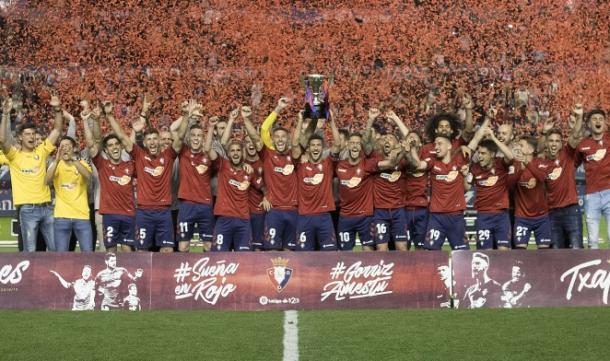
The present...
The team started the season with a confidence that is not typical of a newly promoted team. Perhaps that was because they had gone 31 games without losing at home when Athletic Club broke the barrier.
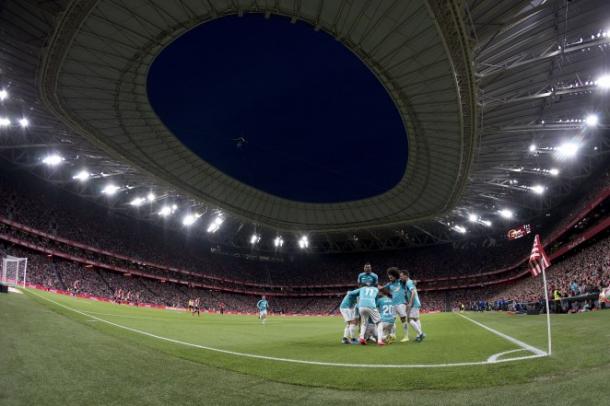
At this stage of the competition, and with doubts over their recovery, Osasuna are in 11th place with 34 points. They are nine points off the relegation places and 11 points off the European places. The "rojillos" have a long way to go to stay at the top , thanks to the likes of LaLiga revelation Chimy Ávila .
Current president and coach

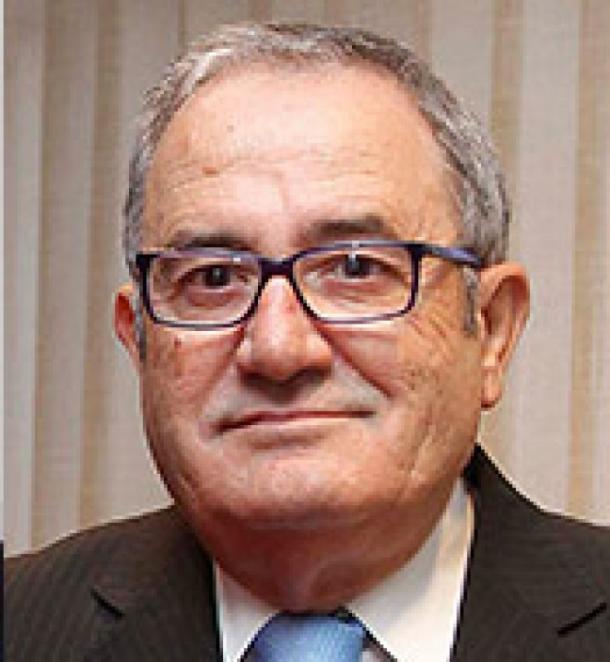
Biography by: Asier Castillejo.




